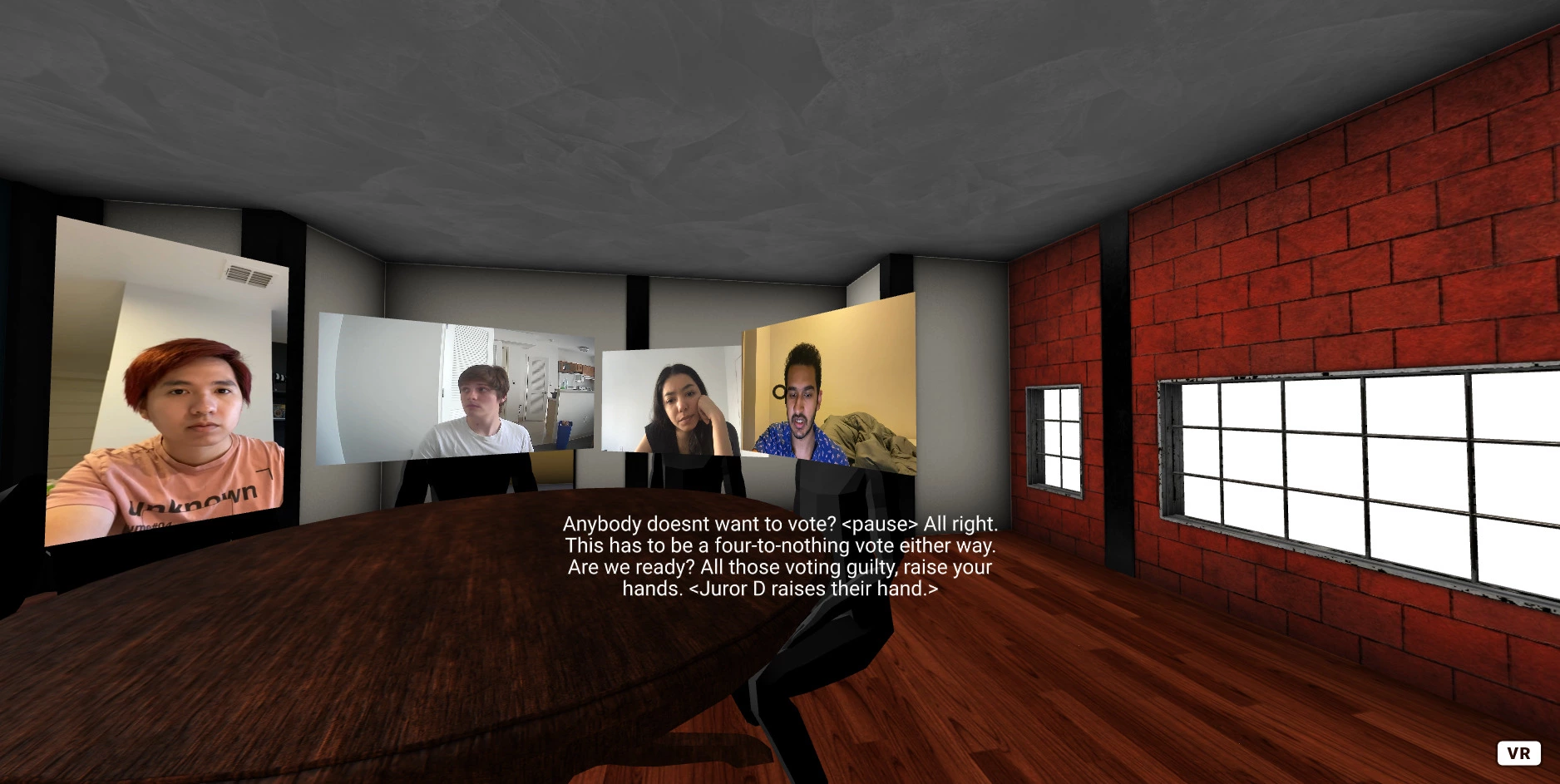Captioning on Glass: Group Conversations
How can head-worn displays caption group conversations?
- Prototype Implementation
- Related Works Gathering
- Academic Paper Writing
- A-Frame (WebVR)
- TypeScript
- Webpack
- HTML/CSS/JS
- Ruchita Parmar
- Thong Nguyen
- Shrenil Sharma
BACKGROUND
As part of Dr. Thad Starner's Mobile & Ubiquitous Computing class, I was part of a four-person team that were given a research problem and asked to come up with a solution over the course of the semester.
PROBLEM
Group conversations can be difficult for people who are deaf or hard-of-hearing to participate in for a few reasons, including:
- It's hard to understand what's being said when more than one person speaks simultaneously
- It's difficult to interpret what people are saying when they're out of view
Existing solutions like real-time captioning software are useful for one-on-one conversations, but are not as helpful in groups. Constantly looking at your phone to read transcriptions can also cause others to think you're being rude or inattentive. Recently, researchers have started using subtler technologies like head-worn displays (or smartglasses) to present captions discreetly, while allowing people with auditory impairments to keep their visual attention on the group conversation.
However, because of how prior research was conducted, it's hard to say whether one method of real-time captioning is better than another. My team was tasked with building a low-cost way of standardizing the evaluation process of these different solutions.
Any solution that we built would need to be easy to access (minimal/no download required), and be ecologically valid (meaning it actually reflected real-world group conversations).
SOLUTION
Our solution is a 3D virtual environment where the participant is sitting at a round table with four other avatars who are performing Blair MacIntyre's Four Angry Men, a short script where jurors are discussing a court case. The participant is presented with a muted video recording of each juror saying their line, as well as a simultaneous caption of their words.
Rather than force the user to download a piece of software or expect them to have expensive equipment, we chose to build our software on the web, enabling easy access on mobile and desktop devices, as well as compatibility with VR headsets.
IMPLEMENTATION
When we decided to build our project using web technologies, we felt like it was unnecessary to re-invent the wheel and write a full VR engine from scratch, and looked for existing technologies that would be helpful in accomplishing our goal. Due to the limited amount of time we had to complete the project, we needed something that had a low learning curve, but also had enough flexibility to go beyond a simple toy project. We then stumbled upon A-Frame, which allowed us to get setup quickly and let us make fast modifications by changing HTML elements. As a bonus, our app worked on desktop, mobile, and VR headsets!
From there, it was simply a matter of building the scene we wanted to show the user, and then synchronizing video feeds with their captions, to simulate the effect of being in a group conversation.
To Be Continued...
My work on this project is ongoing, so check back here for future updates!